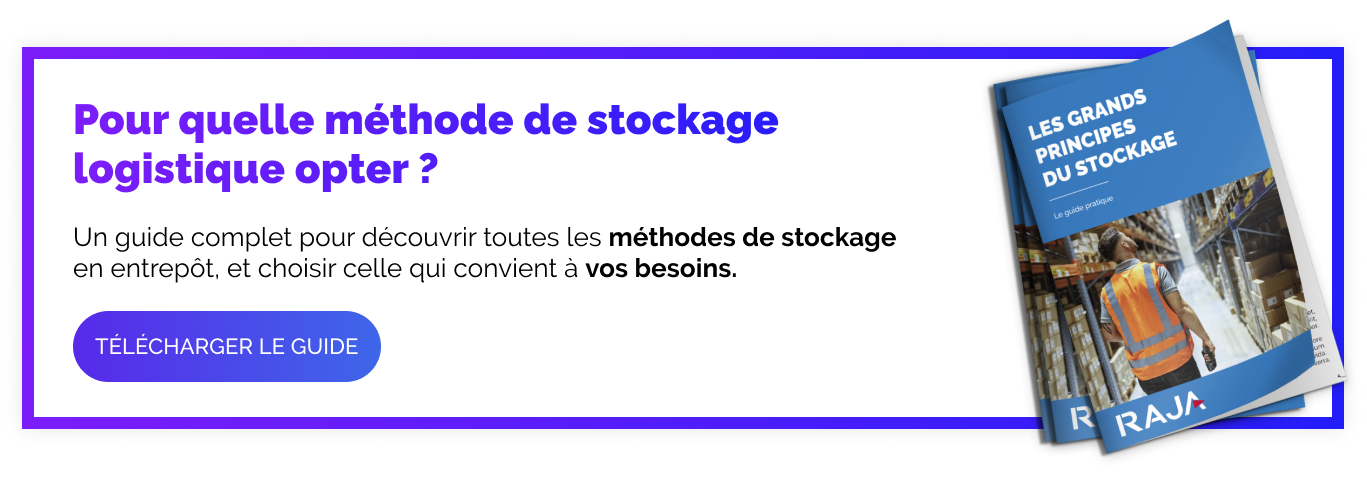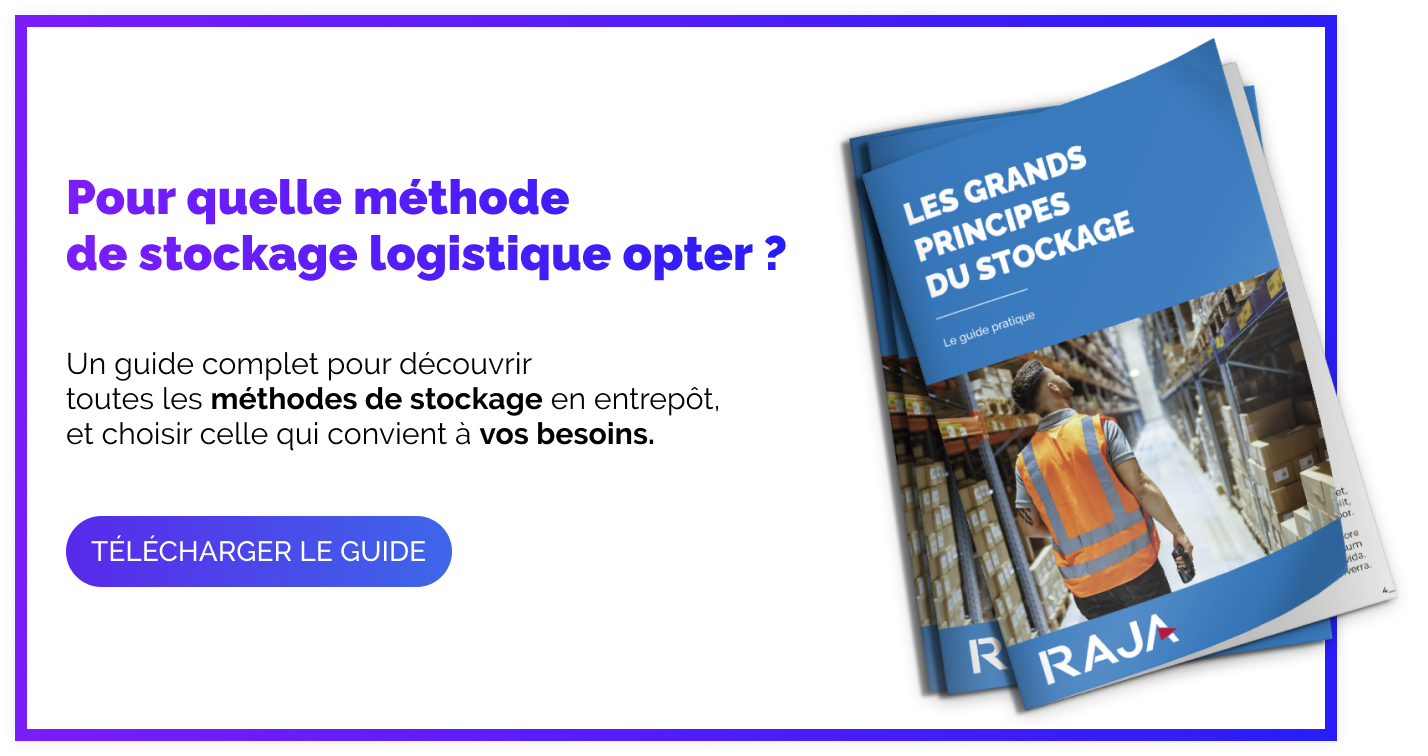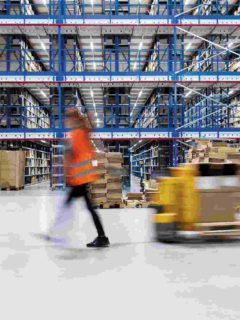Being in charge of a company’s e-commerce transport and logistics strategy is not always an easy job.
From stock and supply management to the routing and transport of goods from the warehouse, a myriad of details can quickly get out of hand.
Yet each of these details affects both your customers’ experience of your e-commerce and your potential profitability. Two factors that should motivate you to manage everything masterfully.
To help you solve the most frequently encountered e-commerce logistics problems, our experts have put them together here for you – along with practical solutions, of course.
Optimise your stocks to better process your orders
Upstream of your supply chain, your management of supply and demand for your suppliers is crucial. It enables you to limit over-stocking or, conversely, stock-outs.
But the traceability of your stocks is also essential, so that you can keep an eye at all times on what is and isn’t available. This availability plays an essential role in the experience you offer your customers, who must not be disappointed when it comes to delivery times.
Your challenge is therefore to put in place a reasonable supply strategy, and toorganise your e-commerce logistics warehouse to manage your inventories properly.
Solutions to put in place
Choose a storage method suited to your business.
- The FIFO method, where you store products that have been in stock for a long time as close as possible to the packaging space, is ideal for perishable products.
- The LIFO method (the opposite of the FIFO method) gives you easy access to the most recent products.
- The ABC method allows you to optimise space according to the product turnover rate – the products that are ordered the most are as close as possible to the order pickers.
To make the right choice when it comes to storage methods, read our article on the subject.
Implementa labelling method in your warehouse, to clearly identify the different zones. If you’ve chosen the ABC method, you can delimit zones A, B and C in your storage area, or label the shelves according to the different types of product they contain.
Get a logistics WMS (Warehouse Management System) to manage your stocks and inventory. This is software that enables you to track the entry and exit of your stock, so you always have a 360° view of what’s going on in your e-commerce business.
Speed up your order preparation
As you know, your customers are expecting ever faster and more efficient deliveries. What’s more, you’re up against competing e-commerce platforms that are increasingly introducing minimum delivery times, such as 24 or 48 hour delivery.
As an e-merchant, this means not only choosing transport service providers who respect these deadlines, but alsooptimising your order preparation phase so that your productscan be packed quickly and efficiently.
Solutions to put in place
Optimise your order preparation area, and in particular your packing station. Not only will this speed up your packing rate, but it will also make the workstation more ergonomic, so as to reduce the workload in the warehouse. Make sure you choose your table carefully (it should be as ergonomic as possible), and place the most frequently used utensils within easy reach of your operators.
To find out more, read our guide to packing station layout.
Choose time-saving packaging. Packaging such as instant or rapid assembly crates (which are assembled automatically, by pressing on the sides), or packaging with integrated cushioning, can help you save precious seconds on your order preparation.
Install packaging machines, such as paper or air cushioning machines, in the warehouse. If you regularly use cushioning materials in your parcels, these machines will enable you to increase your packing speed and ensure that your products are protected. You can also opt for strapping machines to speed up the packing phase.
Creating a distinctive customer experience
To stand up to the competition and build customer loyalty, you need to work on the customer experience surrounding your brand. As an e-commerce company, this of course means offering your customers a seamless online shopping experience.
But e-commerce logistics can itself work to create a differentiating customer experience that will make your brand memorable to your customers.
Solutions to put in place
Choose transport service providers that focus on the customer experience. In particular, you need to be able to offer your customers different modes of transport (home delivery, relay points, automatic left-luggage offices, and even click-and-collect if you also have sales outlets. For home delivery, your carriers must be able to offer your customers real flexibility, and provide optimum tracking for your parcels.
If possible, deliver to the letterbox on the first delivery round. What better way to ensure a smooth customer experience when delivering your smallest orders? That’s why you need postal packaging, such as extra-flat boxes or envelopes, so that your parcels can be slipped into standard letterboxes.
Take care whenunboxing your products. To do this, select packaging that makes it easier to open your parcels. For example, packaging with a tear strip or gummed tape closure, rather than adhesive tape, is ideal. You should also take care with the presentation of your invoices, and include goodies and other little surprises in your parcels to create that much sought-after “wow” effect.
Personalise your packaging – or even create them to measure. You can highlight your brand colours on the packaging itself (on the outside or inside), or even on your cushioning method. You can also include a marketing slogan, or a QR code to extend the customer’s experience on the Internet.
Manage your returns effectively
The way in which you manage your returns can be a real selling point for your potential customers, who want to be sure that they are ordering the right product, and that they can return it if necessary.
In France, the average e-commerce order return rate is 39%. And this rate will probably continue to be stable, or even increase, with generations Y and Z making more use of it (15%) than older people (2%).
As an e-tailer, managing customer returns can be a complex business. You need to regularly update your stocks and ensure that your products are returned to you in optimum condition.
Solutions to put in place
Display a clear customer returns management policy on your website. Highlight it on a dedicated page, but also on your sales pages. Make your returns conditions as clear as possible, including the time limits within which products must be returned and the associated costs. If possible, offer free returns.
Choose return packaging. These are specifically designed to protect your goods on the initial shipment and then on the return. They also have several tear-off strips, so that the customer can re-use them directly, without having to find other packaging.
Controlling your e-commerce logistics costs
Whether you are a small e-merchant or a larger platform, controlling your logistics costs is crucial to ensuring your profitability. Every item of logistics expenditure can be optimised in one way or another.
Solutions to implement
Reduce the weight-volume of your express and international shipments. Most transport providers charge on the basis of the volumetric weight of parcels for these types of delivery. So take the time to eliminate the empty space in your parcels, by choosing packaging that is as close as possible to your goods.
To find out more, read our guide to optimising the weight-volume of your shipments.
Hold regular invitations to tender to find carriers at the right price. These invitations to tender will enable you to find service providers that are suited to your expectations and those of your customers, but who will also enable you to spend a reasonable budget.
Consider using an e-commerce logistics platform if necessary. You may want to consider this logistics outsourcing solution if you need to handle urgent parcels, deal with seasonal peaks in activity, or just want to concentrate on your core business. In particular, some platforms can offer you pooled transport costs, so you can ship your products at a lower cost.
Deploy eco-responsible e-commerce logistics
Consumers are increasingly inclined to boycott a brand if its practices are not environmentally friendly. On the other hand, they remain loyal to brands that communicate their environmental and social commitments – and above all, that stick to them.
You may already be working on the eco-responsibility of your products. But have you thought about the crucial role that your supply chain plays in this ecological image?
Solutions to put in place
Choose eco-responsible e-commerce packaging. You have a wide range of solutions to choose from: reusable, recyclable, biosourced, biodegradable packaging, etc. To see things clearly, refer to the 5Rs rule for packaging, which involves :
- Reduce the raw materials used, by choosing packaging that is as close as possible to your products.
- Reuse packaging whenever possible (as with returnable packaging).
- Replace packaging that does little for the planet with more environmentally-friendly alternatives.
- Renew raw materials as much as possible, by selecting packaging made from renewable resources (such as bio-sourced packaging).
- Recycle as much of your packaging as possible.
Interested in this subject? Find out more about the 5Rs of packaging, and discover some examples to consider.
Find eco-responsible carriers, or choose eco-friendly delivery methods. For example, you can opt for last-mile delivery by couriers on bicycles or cargo-cycles, or choose transporters using hybrid vehicles or running on NGV (Green Natural Gas).
With all these best practices in hand, you’re ready to deploy a more profitable, more efficient and more responsible e-commerce logistics strategy. It’s now up to you!
















